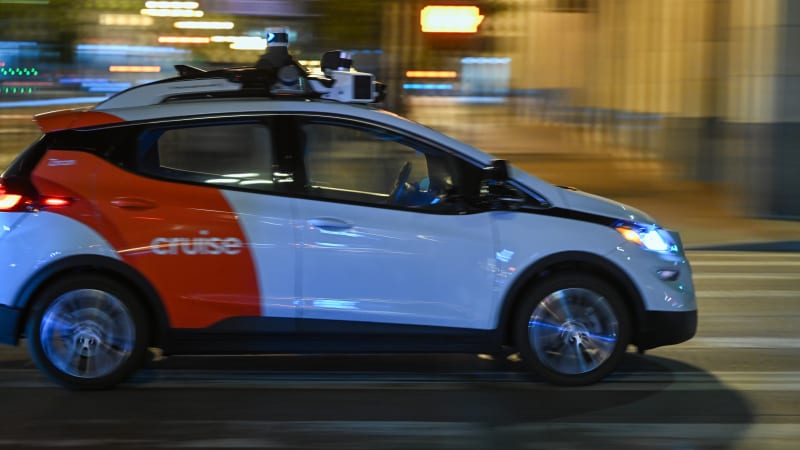Cruise, the self-driving subsidiary of General Motors, said Monday it has begun manual data collection in Seattle and Washington, DC, the first step toward launching commercial services in the cities.
Data collection involves manually driving a robotaxi around to grab information on the local driving environment and climate. The next step will be mapping the new cities.
The move to expand operations to two cities on opposite coasts comes as pressure mounts for the robotaxi company in its hometown of San Francisco. Cruise, along with its competitor Alphabet-owned Waymo, secured permits in mid-August from California regulators to expand their commercial, fully driverless robotaxi services across San Francisco 24/7.
In the week that followed, Cruise vehicles were involved in a series of incidents, including 10 robotaxis stalling and causing gridlock, a vehicle that drove into wet cement, and a crash with a fire truck that left a passenger injured. As a result, the California Department of Motor Vehicles requested that Cruise immediately reduce its robotaxi fleet by 50% in San Francisco while it conducts an investigation into the company.
Despite these issues, Cruise is doggedly moving forward with its expansion plans. The company in 2021 said it plans to have “tens of thousands” of Cruise Origins, Cruise’s yet-to-be-deployed purpose-built AV, on roads in major U.S. cities in the coming years. The U.S. Department of Transportation has still yet to approve
“We’re pipelining our deployment playbook across several cities simultaneously now,” tweeted Cruise founder and CEO Kyle Vogt.
Seattle is the northernmost city that Cruise has approached. Most autonomous vehicle companies have stuck to testing along the sun belt or in cities with mild weather. Inclement weather like rain or snow can affect the ability of sensors, like lidar, radar and cameras, to accurately perceive the environment and make safe driving decisions. As a rainy city with plenty of hills, Seattle will present a unique challenge for Cruise’s self-driving system.
Before the company can begin testing in Seattle, it’ll have to secure a permit from the Seattle Department of Transportation under the agency’s Autonomous Vehicle Testing Permit program. Amazon’s Zoox and Nvidia both hold AV permits from Seattle, which require a human driver in the vehicle to monitor and take over the vehicle as needed. Cruise has not confirmed whether it has already applied for a Seattle AV permit.
Nor has the company confirmed its application for a driverless testing permit in Washington, DC.
Seattle and DC are two out of 15 total cities in which Cruise is either mapping, testing or deploying its self-driving cars. Cruise’s formula for rollouts typically starts with entering a new market with test vehicles to collect data and map, followed by AV testing with a human driver in the front seat. Eventually, Cruise drops the human driver and tests the vehicles autonomously. A ride-hailing service will then become available first to employees and then to customers who have signed up for the service. The service area and hours of operation usually start on a limited basis, often at night, and slowly expand.
Here’s a brief rundown of Cruise’s footprint so far:
Atlanta, Georgia
In August, Cruise began initial testing of its self-driving vehicles in Atlanta.
The company didn’t provide many details in its post on X, the site formerly known as Twitter, stating only “more to come.”
California: San Francisco, Los Angeles and San Diego
Aside from San Francisco, where Cruise offers a full commercial robotaxi service citywide, the AV company has begun data collection and mapping in Los Angeles and San Diego.
Dubai, United Arab Emirates
Cruise began mapping Dubai in July 2022 in preparation for a planned launch in 2023. The company said it hopes to put Cruise Origins on Dubai’s streets this year. Dubai’s RTA confirmed in April that Cruise has several autonomous Chevy Bolts — at least five can be seen in one video — collecting data and testing in the Jumeirah 1 area, a residential area on the coast.
Miami, Florida
Cruise announced in July that it had begun initial testing and data collection in Miami.
“Phase 1 is to familiarize our fleet with additional, diverse road conditions while collecting data,” the company said at the time in a tweet.
Nashville, Tennessee
In late July, Cruise announced plans to expand its robotaxi service to Nashville. The company has not shared details as to when it will launch there.
North Carolina: Charlotte and Raleigh
Last week, Cruise finished its preliminary testing of driverless cars in Charlotte and began initial tests in Raleigh.
Phoenix, Arizona
Cruise first soft-launched its robotaxi service in Chandler, a city southeast of Phoenix, in December 2022. In early August, the company expanded its radius in the Phoenix area by 20x to include Tempe and Scottsdale. The free service is available from 7 p.m. to 2 a.m. for “power users” initially, and then will roll out to members of the general public.
Texas: Austin, Houston and Dallas
At the end of 2022, Cruise began testing its vehicles in Austin. The company currently offers a free driverless service in downtown and central Austin, including the University of Texas campus, from 9 p.m. to 5 a.m. The company said in March it would begin testing its Origins in the city within the coming weeks but has not confirmed if it has done so.
Cruise also began supervised testing of AVs in Houston and Dallas in May, meaning testing with a human safety driver in the car. The company says it is on track to begin a driverless ride-hail service for members of the public “soon.”





